Midtown CPR BLS Certification
Midtown CPR teaches the 2025 American Heart Association (AHA) Guidelines for Cardiopulmonary Resuscitation (CPR) and Emergency Cardiovascular Care (ECC) Life-saving training from the leader in CPR science & education.
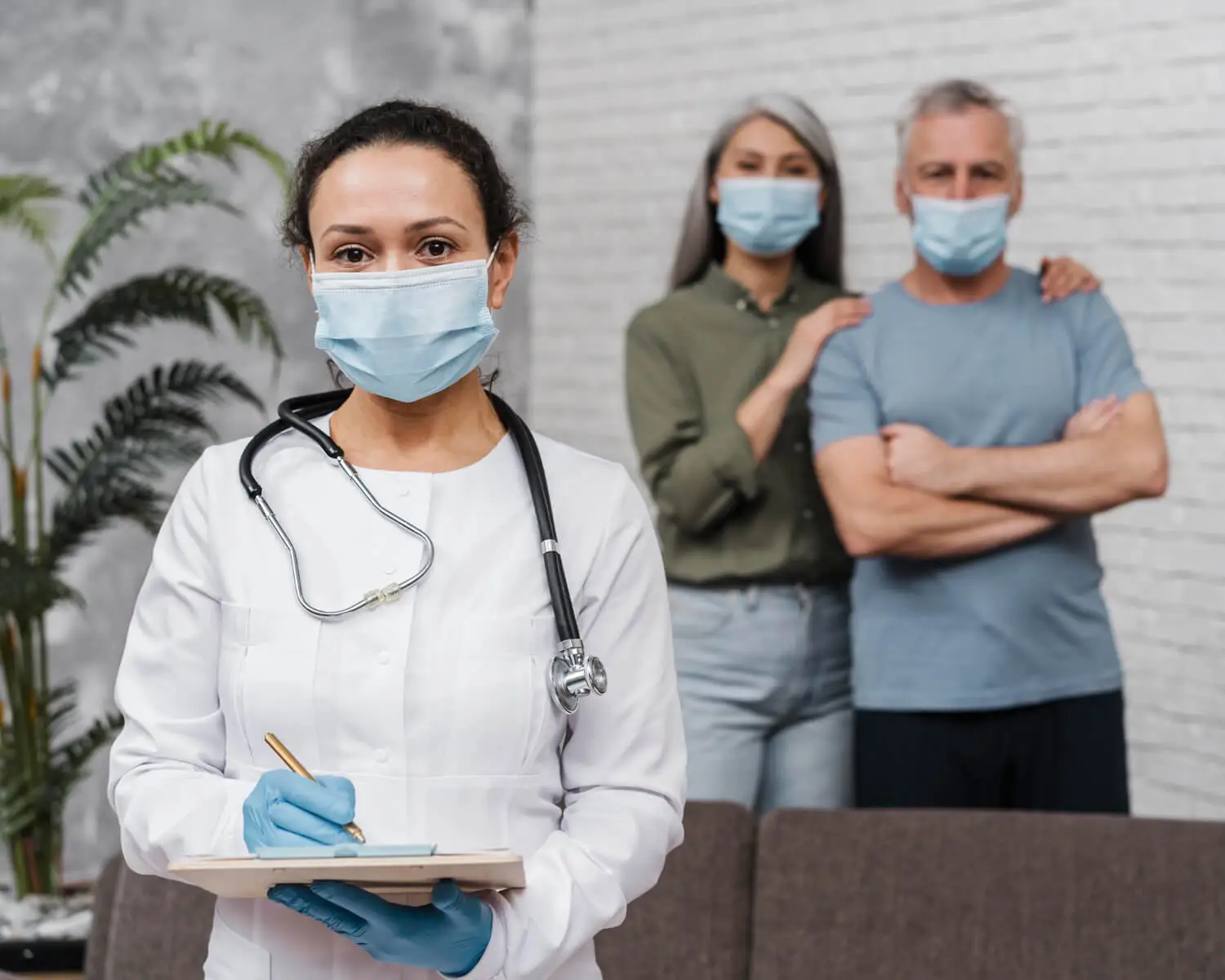
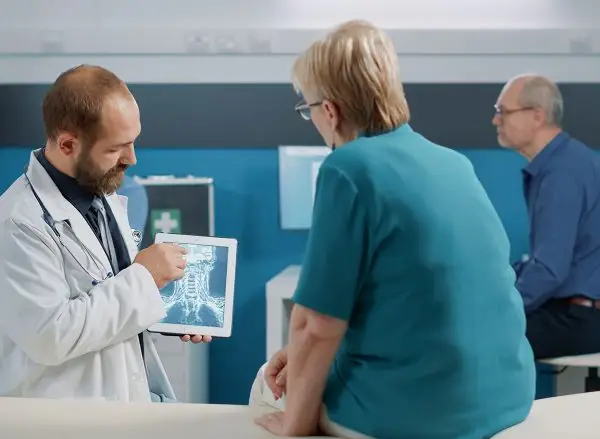
About Midtown CPR
Memphis Midtown CPR is dedicated to providing quality American Heart Association (AHA) BLS Certification and CPR training, including comprehensive instruction in Basic Life Support (BLS) for Healthcare Providers. Our BLS Certification AHA courses are tailored to meet the needs of students and medical professionals throughout the Greater Memphis Area. Whether you’re seeking BLS Certification Online or in-person classes, we ensure you receive top-tier education from certified instructors.
Memphis Midtown CPR is locally owned and operated. We are not franchised, nor are we affiliated with any national chains. Our family is deeply rooted in the healthcare industry and passionate about education. We live in Midtown Memphis, and all of us have attended Memphis and Shelby County Schools.
Our commitment is to the health and well-being of the citizens of the Greater Memphis Area. We provide CPR and BLS Training that empowers our community to respond effectively in emergencies. As public health concerns shift from infectious to chronic diseases such as heart disease, congestive heart failure, diabetes, stroke, and hypertension, the need for reliable Healthcare Provider BLS Certification is more critical than ever.
We aim to educate the community on the importance of a healthy diet and exercise. The obesity epidemic in Memphis and surrounding areas has sparked positive changes like increased bike lanes, walking trails, and fitness facilities throughout the city. With our BLS Renewal courses and ongoing CPR Certification training, we help build a healthier, more prepared Memphis.

Our Approach
We use the latest heart science technology developed by American Heart Association researchers to teach our students

Our Story
In collaboration with experts in the field and extensive studies, In collaboration with experts in the field and extensive studies,
Midtown AHA CPR & BLS Certification Services
Midtown CPR BLS Certification class satisfies all the requirements for the following school programs: Nursing, Dental, EMT, Paramedic, Radiologist, Respiratory Therapy, CNA, Pharmacy, Hygienist, and more… Let Midtown CPR get you ready for any emergency that may arise.

Client Reviews
Midtown CPR BLS Certification
Get CPR Certification in Memphis, TN — Fast, Affordable, and AHA-Approved
If you’re searching for CPR certification in Memphis, TN, Memphis Midtown CPR provides top-rated, American Heart Association (AHA) CPR and BLS classes designed for healthcare professionals, nursing students, first responders, and workplace teams. Our BLS CPR certification training in Memphis includes hands-on instruction, AED training, and CPR certification for healthcare providers — all led by certified local instructors. We offer CPR and first aid certification classes in Midtown Memphis, CPR renewal courses, and hybrid online BLS certification options that fit your schedule. Trusted by hospitals, schools, and employers across Shelby County, our mission is to deliver affordable, same-day CPR certification with AHA compliance, so you’re always ready when it counts.
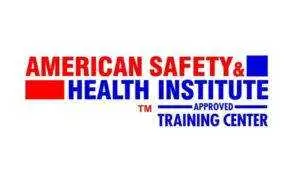
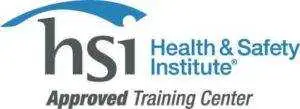


Book Now Midtown CPR BLS Certification

Frequently Asked Questions
What is CPR?
CPR – or Cardiopulmonary Resuscitation – is an emergency lifesaving procedure performed when the heart stops beating. Immediate CPR can double or triple chances of survival after cardiac arrest.
What does the acronym "AHA" stand for?
American Heart Association
Who should learn CPR?
Everyone. Regardless of particular job requirements, anyone with a family should learn CPR, because 85% of cardiac arrests occur at home. If something happens to a loved one, there is nothing worse than not knowing what to do in an emergency situation. At the very least, keep a first aid kit in your home and vehicle and know how to administer basic chest compressions while waiting for emergency responders. This could mean the difference between life and death for your child, parent or spouse, or even for yourself.
What are the basic steps of CPR?
Check that the area is safe, then perform the following basic CPR steps:
- Call 911 or ask someone else to.
- Lay the person on their back and open their airway.
- Check for breathing. ...
- Perform 30 chest compressions.
- Perform two rescue breaths.
- Repeat until an ambulance or automated external defibrillator (AED) arrives.
When should CPR be performed?
Steps to help a person having a cardiac arrest are listed below.
- If you see someone collapse, check to see whether the person responds to shouting and tapping on their body. Check for breathing and a pulse. If the person is not breathing normally and if they do not respond, call 9-1-1for help.
- Start CPR.
- Locate an AED. Follow the AED’s verbal instructions to deliver a shock to restart the heart of the affected person.
- Continue CPR until first responders arrive and take over. First responders will continue CPR and may use an AED to give more shocks to restore the affected person’s heart rhythm. They may also give medicines through an intravenous (IV) line.
How long should I perform CPR on someone?
The CPR can be stopped if
- the ambulance arrives and trained medical staff take over, or
- the person who you are helping shows signs of consciousness or starts breathing normally again.
- If they stay unconscious despite breathing normally, put them in the recovery position.
- If you’re too exhausted to carry on doing chest compressions, that’s an acceptable reason to stop as well.
What should I do if the person is not responding to CPR?
- When a doctor—or some other appropriate emergency medical provider, like a paramedic—tells you to stop.
- When you become exhausted and cannot continue (this gets messy, as we'll see below).
- When the patient begins yelling at you to stop hitting him in the chest (this really happens). In other words, when the patient gets better.
Can CPR save someone's life?
AHA CPR, especially if administered immediately after cardiac arrest, can double or triple a person's chance of survival. According to 2021 US data for adult OHCA only, survival to hospital discharge was 9.1% for all EMS-treated non-traumatic OHCA cardiac arrests.
How effective is CPR?
According to the CDC, Currently, about 9 in 10 people who have cardiac arrest outside the hospital die.2 But CPR can help improve those odds. If it is performed in the first few minutes of cardiac arrest, CPR can double or triple a person’s chance of survival.
The initial success rate of cardiopulmonary resuscitation was equal to 15.3%, while the ultimate success rate (discharged alive from the hospital) was as 10.6%. The six-month success rate after resuscitation was 8.78% than those who were discharged alive. There were no significant statistical differences between different age groups regarding the initial success rate of resuscitation (P = 0.14), and the initial resuscitation success rate was higher in patients in morning shift (P = 0.02).
What are the risks of performing CPR?
CPR can break ribs and cause severe pain. Survivors likely face a long hospital stay and rehabilitation. Complications of intubation and ventilation include damage to the teeth, voice box or lungs, pneumonias or other infections, and collapsed lungs.
What is the difference between CPR and basic life support (BLS)?
- The primary is that Basic Life Support (BLS) goes into additional detail regarding managing a cardiac event in a medical setting where you’re more likely to have access to medical equipment and more advanced lifesaving tools, and those with more medical training may be nearby.
- CPR courses are intended for people who will be helping “victims” outside of a clinical setting, the course you take may actually be CPR plus First Aid. In a course like this, you learn how to manage various medical emergencies in a non-medical setting while awaiting emergency responders.
What is BLS certification?
- The AHA’s BLS course trains participants to promptly recognize several life-threatening emergencies, give high-quality chest compressions, deliver appropriate ventilations and provide early use of an AED. Reflects science and education from the American Heart Association Guidelines Update for CPR and Emergency Cardiovascular Care (ECC).
What are the basic skills taught in BLS certification?
- High-quality CPR for adults, children, and infants
- The AHA Chain of Survival, specifically the BLS components
- Important early use of an AED
- Effective ventilations using a barrier device
- Importance of teams in multirescuer resuscitation and performance as an effective team member during multirescuer CPR
- Relief of foreign-body airway obstruction (choking) for adults and infants
Can I still provide BLS if my certification has expired?
- No, When you receive your BLS certification, it is good for a certain period of time. Once the time has elapsed, you will need to recertify if you wish to maintain access to patients and continue working in this field. Otherwise, you could be putting lives at risk! If your current cert expires soon or already has expired (you can check by looking up the expiration date on your card), there are some things that must take place before you’re allowed back into patient rooms.
- First things first: always confirm with facility policy as each hospital/clinic should have its own unique requirements when it comes to getting re-certified.
- Secondly, you will need to complete a course and pass an exam in order to recertify your BLS. A new certification period is not automatic: it doesn’t simply start when the old one expires. You must go through this process again by taking a training class or online program and passing an assessment test before being allowed back into patient rooms.
Can I get BLS certified if I have a disability?
- The Advisor: Basic Life Support (BLS) program was developed for candidates who pass the cognitive portion of the HeartCode® BLS Provider Course but cannot independently perform the physical skills of CPR.
- By successfully advising others how to perform CPR and use an automated external defibrillator (AED), people with physical disabilities can receive an Advisor: BLS card.
Midtown CPR BLS Certification
BOOK NOW

AHA BLS Certification
Midtown CPR is very accommodating when it comes to your AHA BLS Certification needs. Therefore, ask us about group, blended, onsite, and online certification.
Customer Reviews
Midtown CPR BLS Certification
Midtown CPR is located in the Midtown Medical District. We offer American Heart Association, Basic Life Support, BLS Certification, and CPR Certification for Medical Professionals & students. In Addition, our instructors are AHA certified. In conclusion, at the end of class, you will receive your 2-year AHA CPR or BLS certification for the Healthcare Provider, Heartsaver, or Heartsaver for K-12 Schools

AHA BLS Certification
American Heart Association (AHA) BLS certification is typically required for a wide range of medical professionals who are involved in direct patient care or may be called upon to respond to medical emergencies. Some examples of medical professionals who may need AHA BLS certification include:
1.Physicians: Medical doctors who work in various specialties such as emergency medicine, internal medicine, cardiology, pediatrics, anesthesiology, and critical care may need AHA BLS certification. This enables them to provide timely and effective life-saving interventions in emergency situations.
2. Registered Nurses (RNs) and Nurse Practitioners (NPs): RNs and NPs who work in hospitals, clinics, ambulatory care settings, and other healthcare facilities are often required to have AHA BLS certification. This allows them to respond quickly and appropriately to medical emergencies and provide basic life support until further help arrives.
3. Emergency Medical Services (EMS) Personnel: EMS personnel, including paramedics and emergency medical technicians (EMTs), who provide pre-hospital care and transportation of patients, are often required to have AHA BLS certification. BLS skills are critical for managing patients in emergency situations and stabilizing their condition during transport.
4. Respiratory Therapists: Respiratory therapists, who provide care for patients with respiratory conditions and may assist with resuscitation efforts during cardiac arrest, often require AHA BLS certification.
5. Dentists and Dental Hygienists: Dentists and dental hygienists who perform procedures that involve sedation or administration of anesthesia may need AHA BLS certification to be prepared to manage emergencies that can occur during these procedures.
6. Pharmacists: Pharmacists who work in clinical settings, such as hospitals or ambulatory care clinics, may need AHA BLS certification to be prepared to respond to medical emergencies that may occur in their practice settings.
7. Medical and Nursing Students: Many medical and nursing schools require their students to obtain AHA BLS certification as part of their training, to ensure that they are prepared to respond to emergencies during their clinical rotations.
It’s important to note that the specific requirements for AHA BLS certification may vary by institution or employer, and healthcare professionals should consult their workplace or regulatory guidelines to determine their specific certification requirements. Overall, AHA BLS certification is essential for medical professionals who are involved in direct patient care or may be called upon to respond to medical emergencies, to ensure that they are equipped with the necessary skills to provide life-saving care

AHA Heartcode BLS Certification
AHA HeartCode® BLS is an online training program by the American Heart Association. It teaches healthcare professionals and others how to perform CPR and use an AED. The program combines interactive online modules covering CPR techniques for adults, children, and infants, along with AED usage and team dynamics during resuscitation.
Participants complete the cognitive portion of the training online, which includes video demonstrations, interactive exercises, and case-based scenarios. Afterward, they attend an in-person skills session, where they practice and demonstrate CPR and AED usage under an AHA instructor’s guidance. This hands-on session ensures that participants can apply their knowledge effectively and receive feedback on their techniques.
Once both the online modules and the skills session are successfully completed, participants receive an AHA BLS Provider course completion card. This card certifies their competency in CPR and AED usage and remains valid for two years.
HeartCode® BLS offers a flexible and convenient option for individuals seeking BLS certification, enabling them to learn at their own pace and acquire essential life-saving skills effectively. By combining online learning with practical application, the program equips participants with the knowledge and confidence to respond to cardiac emergencies and potentially save lives.
With AHA HeartCode® BLS, the American Heart Association demonstrates its commitment to advancing life support training and making it more accessible to a broader audience. The program’s self-paced nature allows participants to review and reinforce their knowledge as often as needed, ensuring a higher level of retention and skill proficiency.
As technology continues to evolve, the AHA continually updates and improves the online modules, incorporating the latest evidence-based guidelines and best practices for CPR and AED usage. This ensures that participants receive the most up-to-date information and training, aligning with the latest advancements in resuscitation science.
HeartCode® BLS also promotes the importance of teamwork during emergencies. The program emphasizes the significance of effective communication and coordination among responders, creating a more efficient and organized approach to save lives collectively.
Furthermore, the program’s widespread availability has contributed to a broader dissemination of life-saving knowledge globally. It has empowered individuals in various countries to receive standardized, high-quality training, thus raising the overall standard of emergency response across borders.
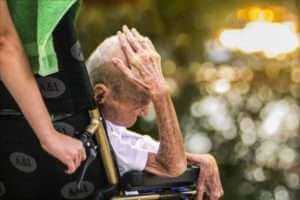
Home Health CPR AED & First Aid
This course meets or exceeds Tennessee Department of Intellectual and Developmental Disabilities (DIDD) requirements for CPR, AED, and Basic First Aid.
Home Health CPR/AED and first aid certification are important for several reasons:
Prompt Emergency Response: Home health caregivers often work in situations where they may be the first to respond to a medical emergency. Having CPR/AED and first aid certification equips them with the necessary skills to provide immediate assistance until professional medical help arrives. This quick response can potentially save lives and minimize the severity of injuries.
Enhanced Safety for Patients: Patients receiving home health care may have underlying medical conditions or be at a higher risk for emergencies. With CPR/AED and first aid certification, caregivers can respond effectively in situations such as choking, cardiac arrest, or severe injuries, ensuring the safety and well-being of their patients.
Peace of Mind for Families: Families of patients who require home health care can have peace of mind knowing that their loved ones are in the hands of caregivers who are trained in CPR/AED and first aid. This certification reassures families that caregivers are prepared to handle unexpected medical situations and can provide immediate care when needed.
Professional Competence and Qualifications: Home health caregivers with CPR/AED and first aid certification demonstrate their commitment to their profession and their patients. Certification indicates that caregivers have undergone training and have acquired the necessary knowledge and skills to respond appropriately in emergency situations. It enhances their professional competence and qualifications, making them valuable assets to home healthcare agencies.
Compliance with Regulatory Requirements: In some regions or for specific home health care agencies, CPR/AED and first aid certification may be a regulatory requirement. Caregivers must obtain certification to meet these requirements and maintain compliance with relevant regulations. It ensures that caregivers are prepared to handle emergencies and adhere to established standards of care.
Overall, home health CPR/AED and first aid certification are vital for ensuring the safety and well-being of both patients and caregivers. It enables caregivers to respond promptly and effectively during emergencies, provides peace of mind to families, and demonstrates professional competence and qualifications in the home health care field.
As a result, a combination training program helps students develop the knowledge, skills, and confidence to respond to a medical emergency. Therefore, this 4-5 hour class is an excellent choice for both the community, home health, and workplace setting, and conforms to the 2020 Guidelines for CPR, ECC, and First Aid.

Allied Health Professionals
Allied health professionals are an essential part of the healthcare team, providing critical support and services to patients and other healthcare providers. They include a diverse group of individuals working in various healthcare settings, such as hospitals, clinics, long-term care facilities, rehabilitation centers, and more.
AHA BLS Certification, which stands for American Heart Association Basic Life Support Certification, is vital for allied health professionals for several reasons:
Emergency Response: BLS training equips healthcare professionals with the skills to recognize and respond to life-threatening emergencies, such as cardiac arrest, choking, or severe allergic reactions. They learn how to provide immediate and appropriate care until more advanced medical help arrives.
Patient Safety: As allied health professionals often work directly with patients, having BLS Certification ensures they can respond effectively in critical situations. Prompt and accurate action can significantly improve patient outcomes and even save lives.
Team Collaboration: In healthcare settings, collaboration and teamwork are crucial. BLS Certification ensures that allied health professionals share a common understanding of emergency protocols, enabling effective communication and seamless coordination during crises.
Job Requirements: Many healthcare employers, including hospitals and clinics, require allied health professionals to have a current BLS Certification as a condition of employment. It demonstrates their commitment to patient safety and enhances their employability.
Legal and Ethical Considerations: In some regions, healthcare professionals may have a legal duty to provide assistance in an emergency. BLS training helps allied health professionals fulfill these obligations with confidence and competence.
Continuing Education: BLS Certification is often a prerequisite for pursuing further training and advanced certifications in specific medical fields. It serves as a foundation for more specialized skills development.
Professional Development: Maintaining BLS Certification reflects a commitment to ongoing professional development and staying up-to-date with the latest guidelines and best practices in emergency care.
The American Heart Association’s BLS course covers essential topics such as cardiopulmonary resuscitation (CPR), automated external defibrillator (AED) usage, airway management, and techniques for providing basic life support in various scenarios. It’s important for allied health professionals to remember that BLS Certification typically needs renewal every two years, as guidelines and procedures may change over time. Keeping their certification current ensures they are always prepared to respond effectively in emergencies and provide the best possible care to their patients.
